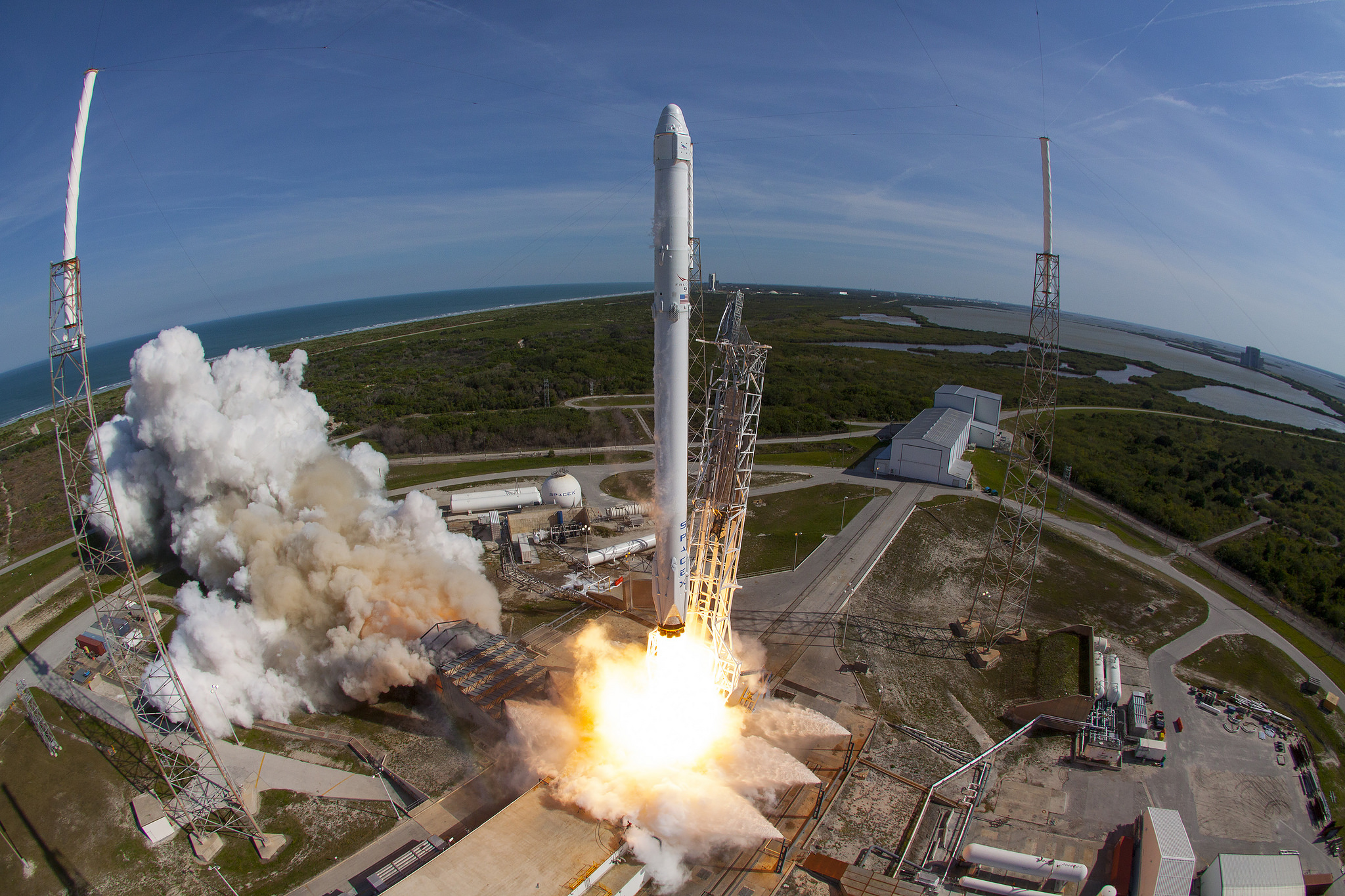No NASA Jitters Ahead of SpaceX's Used-Rocket Launch to Space Station Tuesday

SpaceX is about to take a big step in its quest for full reusability.
The company's two-stage Falcon 9 rocket is scheduled to launch a robotic Dragon capsule tomorrow (Dec. 12) on a resupply mission to the International Space Station (ISS) for NASA. The liftoff will be the second for this particular Dragon and Falcon 9 first stage, which launched on ISS cargo runs in April 2015 and June 2017, respectively.
"This is the beginning of rapid and reliable reusability," SpaceX's Dragon mission manager Jessica Jensen said during a prelaunch briefing today (Dec. 11). [Reusable Rocket Systems: How They Work (Infographic)]
"In the long run, reusability is going to significantly reduce the cost of access to space, and that's what's going to be required to send future generations to explore the universe," Jensen added. "We want to be able to send thousands of people into space, not just tens."
SpaceX has landed Falcon 9 first stages 19 times during orbital flights to date, and it has re-flown such boosters on three separate occasions. It has re-launched a used Dragon just the one time noted above. Tomorrow's launch will therefore be SpaceX's first reusability double-dip, with both booster and spacecraft.
NASA officials said they're not nervous about tomorrow's launch — well, not any more nervous than usual, anyway.
"Every time we launch a rocket, I'm anxious," said Kirk Shireman, NASA's ISS program manager. "It's still a dangerous business, so I will be anxious tomorrow."
Get the Space.com Newsletter
Breaking space news, the latest updates on rocket launches, skywatching events and more!
But NASA has a lot of experience with used spacecraft, Shireman said, pointing to the agency's now-retired space shuttle orbiters. He also said NASA did "an extensive review" to assess the risk of using a pre-flown Falcon 9 first stage.
"We're very comfortable that the risk posture on this vehicle is not significantly greater than [on] a new booster," Shireman said. "We think of it as equivalent risk."
SpaceX's ultimate goal is total reusability, as the company's recently unveiled plans for its huge Mars rocket and spaceship make clear. But the Falcon 9's second stage remains expendable for now, and for the near future.
"That is not a priority right now," Jensen said of working to make the second stage reusable.
Tomorrow's Dragon launch is noteworthy in other respects as well. For example, the Dragon is loaded with lots of interesting science gear, including a privately owned machine designed to make optical fiber on orbit, a space-debris tracker and an instrument that will precisely measure the amount of solar energy reaching Earth.
In all, Dragon will tote about 4,800 lbs. (2,180 kilograms) of payload up to the orbiting lab.
Also, the liftoff will take place from the newly refurbished Launch Complex 40 at Florida's Cape Canaveral Air Force Station. The launch will be the first in more than a year from Pad 40, which was seriously damaged in September 2016 when a Falcon 9 exploded during a routine pre-flight test.
Follow Mike Wall on Twitter @michaeldwall and Google+. Follow us @Spacedotcom, Facebook or Google+. Originally published on Space.com.
Join our Space Forums to keep talking space on the latest missions, night sky and more! And if you have a news tip, correction or comment, let us know at: community@space.com.

Michael Wall is a Senior Space Writer with Space.com and joined the team in 2010. He primarily covers exoplanets, spaceflight and military space, but has been known to dabble in the space art beat. His book about the search for alien life, "Out There," was published on Nov. 13, 2018. Before becoming a science writer, Michael worked as a herpetologist and wildlife biologist. He has a Ph.D. in evolutionary biology from the University of Sydney, Australia, a bachelor's degree from the University of Arizona, and a graduate certificate in science writing from the University of California, Santa Cruz. To find out what his latest project is, you can follow Michael on Twitter.









